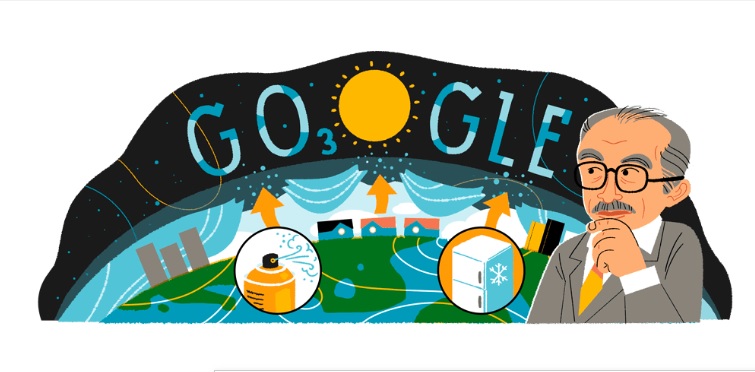Google Doodle Today: Dr Mario Molina was one of the first to discover that chlorofluorocarbons were breaking down the ozone and causing ultraviolet radiation to reach Earth’s surface
GOOGLE DOODLE TODAY: 19 March, 2023 Google Doodle celebrates the 80th birthday of Dr Mario Molina, a Mexican chemist who successfully convinced governments to come together to save the planet’s ozone layer. A co-recipient of the 1995 Nobel Prize in Chemistry, Dr Molina was one of the researchers who exposed how chemicals deplete Earth’s ozone shield, which is vital to protecting humans, plants, and wildlife from harmful ultraviolet light.
HERE’S ALL YOU NEED TO KNOW ABOUT THE NOBEL LAUREATE
- Dr Molina was born on 19 March, 1943 in Mexico City. As a child, he was so passionate about science that he turned his bathroom into a makeshift laboratory. Nothing could compare to the joy of watching tiny organisms glide across his toy microscope.
- Dr Molina went on to earn a bachelor’s degree in chemical engineering from the National Autonomous University of Mexico, and an advanced degree from the University of Freiburg in Germany.
- After completing his studies, he moved to the United States to conduct postdoctoral research at the University of California, Berkeley, and later at the Massachusetts Institute of Technology.
- In the early 1970s, Dr Molina began researching how synthetic chemicals impact Earth’s atmosphere.
- He was one of the first to discover that chlorofluorocarbons (a chemical found in air conditioners, aerosol sprays, and more) were breaking down the ozone and causing ultraviolet radiation to reach Earth’s surface.
- He and his co-researchers published their findings in the Nature journal, which later won them the Nobel Prize in Chemistry.
- The groundbreaking research became the foundation of the Montreal Protocol, an international treaty that successfully banned the production of nearly 100 ozone-depleting chemicals.
- This international alliance is considered one of the most impactful environmental treaties ever made — a precedent that shows governments can work together effectively to tackle climate change.
- He passed away of heart attack at the age of 77 on 07 October, 2020.
- The Mario Molina Center, a leading research institute in Mexico, carries on his work to create a more sustainable world.





















